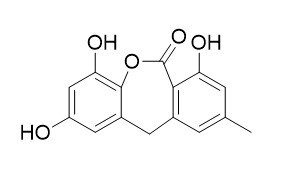9-Dehydroxyeurotinone
Reference standards.
Inquire / Order:
manager@chemfaces.com
Technical Inquiries:
service@chemfaces.com
Tel:
+86-27-84237783
Fax:
+86-27-84254680
Address:
1 Building, No. 83, CheCheng Rd., Wuhan Economic and Technological Development Zone, Wuhan, Hubei 430056, PRC
Providing storage is as stated on the product vial and the vial is kept tightly sealed, the product can be stored for up to
24 months(2-8C).
Wherever possible, you should prepare and use solutions on the same day. However, if you need to make up stock solutions in advance, we recommend that you store the solution as aliquots in tightly sealed vials at -20C. Generally, these will be useable for up to two weeks. Before use, and prior to opening the vial we recommend that you allow your product to equilibrate to room temperature for at least 1 hour.
Need more advice on solubility, usage and handling? Please email to: service@chemfaces.com
The packaging of the product may have turned upside down during transportation, resulting in the natural compounds adhering to the neck or cap of the vial. take the vial out of its packaging and gently shake to let the compounds fall to the bottom of the vial. for liquid products, centrifuge at 200-500 RPM to gather the liquid at the bottom of the vial. try to avoid loss or contamination during handling.
LWT2020, 110397
Applied Biological Chemistry2022, 71:s13765-022-00743-5.
J Biochem Mol Toxicol.2021, 35(5):e22731.
Nutrients.2022, 14(23):4997.
Mol Divers.2022, s11030-022-10586-3.
Phytochem Anal.2016, 27(5):296-303
Biomed Pharmacother.2024, 175:116770.
Chemistry of Vegetable Raw Materials2019, 3:119-127
Oncol Lett.2020, 20(4):122.
Antioxidants (Basel).2023, 12(5):1111.
Related and Featured Products
Helvetica Chimica Acta, 2012, 95(1):163-168.
Alkaloid and Anthraquinone Derivatives Produced by the Marine-Derived Endophytic Fungus Eurotium rubrum.[Reference:
WebLink]
METHODS AND RESULTS:
Cultivation of the fungal strain Eurotium rubrum, an endophytic fungus that was isolated from the inner tissue of the semi-mangrove plant Hibiscus tiliaceus, resulted in the isolation of one new dioxopiperazine alkaloid, 12-demethyl-12-oxo-eurotechinulin B (1), and one new anthraquinone derivative, 9-Dehydroxyeurotinone (2), together with ten known compounds including variecolorin J (3), eurotechinulin B (4), variecolorin G (5), alkaloid E-7 (6), cryptoechinuline G (7), isoechinulin B (8), 7-isopentenylcryptoechinuline D (9), 2-O-methyl-9-Dehydroxyeurotinone (10), emodin (11), and emodic acid (12).
CONCLUSIONS:
The structures of the isolated compounds were determined by extensive analysis of their spectroscopic data as well as by comparison with literature reports.
Some of the purified compounds were evaluated for antibacterial, antifungal, and cytotoxic activities.



